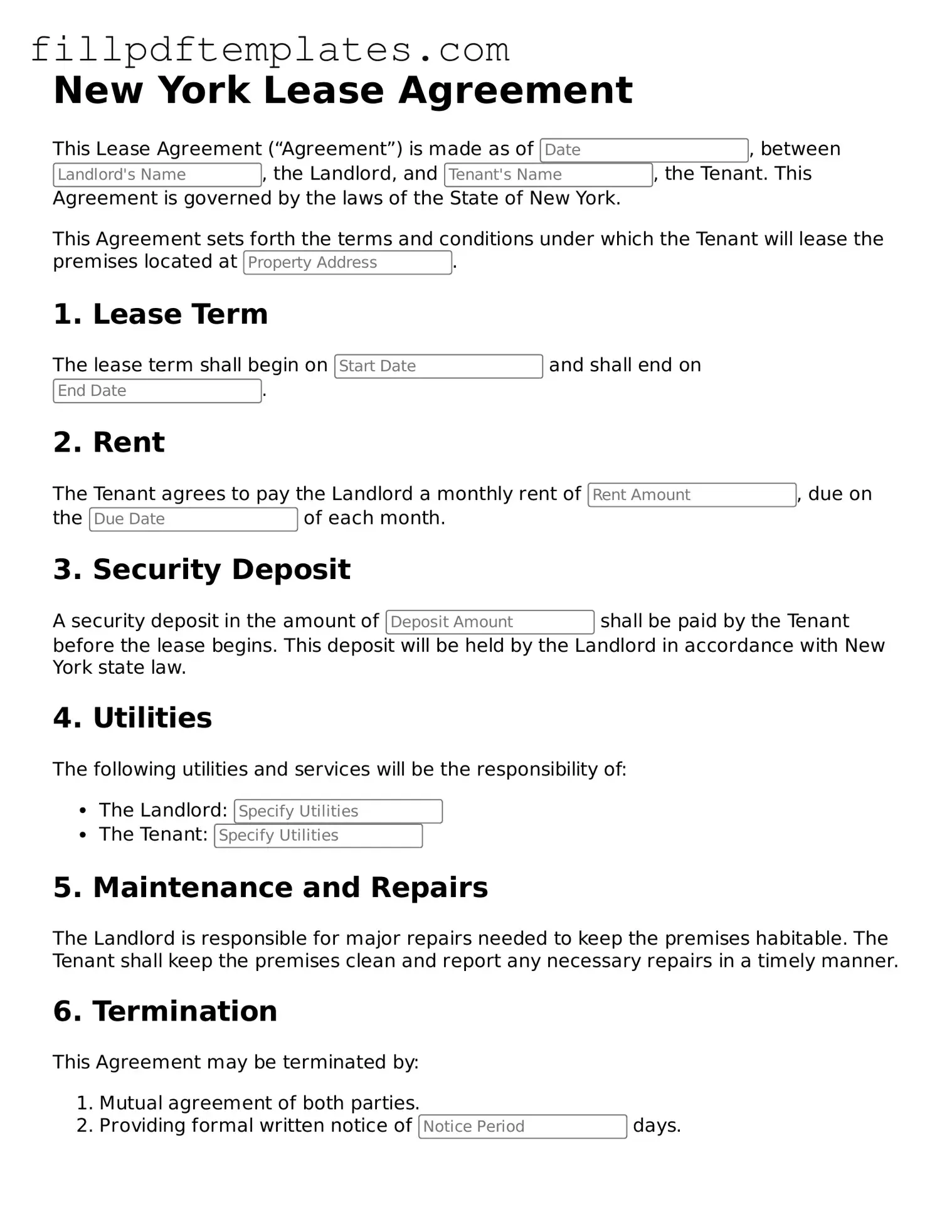Blank New York Lease Agreement Form
A New York Lease Agreement is a legally binding document that outlines the terms and conditions between a landlord and tenant for renting residential or commercial property in New York. This form details important aspects such as rental amount, duration of the lease, and responsibilities of both parties. Understanding this agreement is crucial for ensuring a smooth rental experience; fill out the form by clicking the button below.
Get Form
